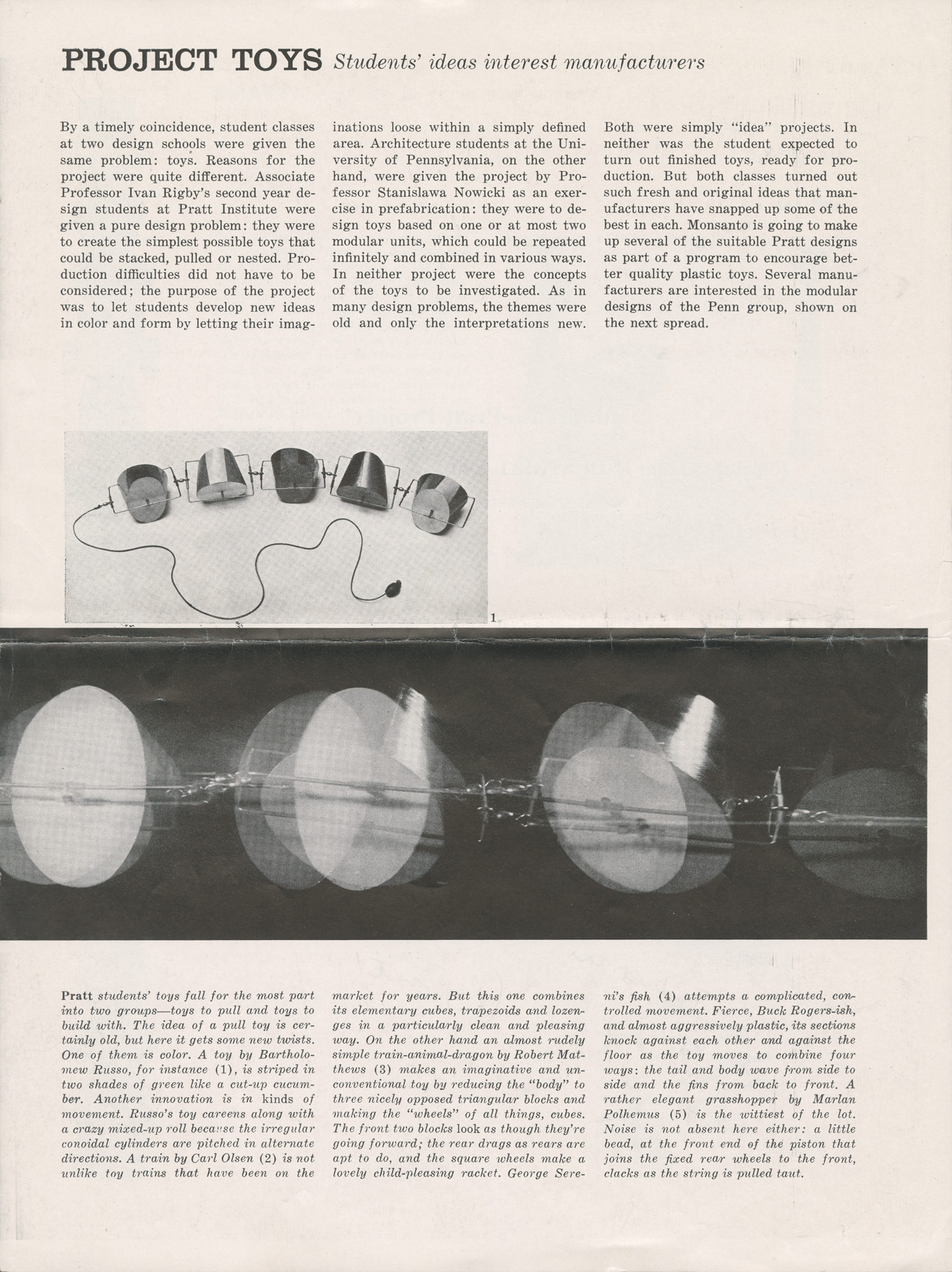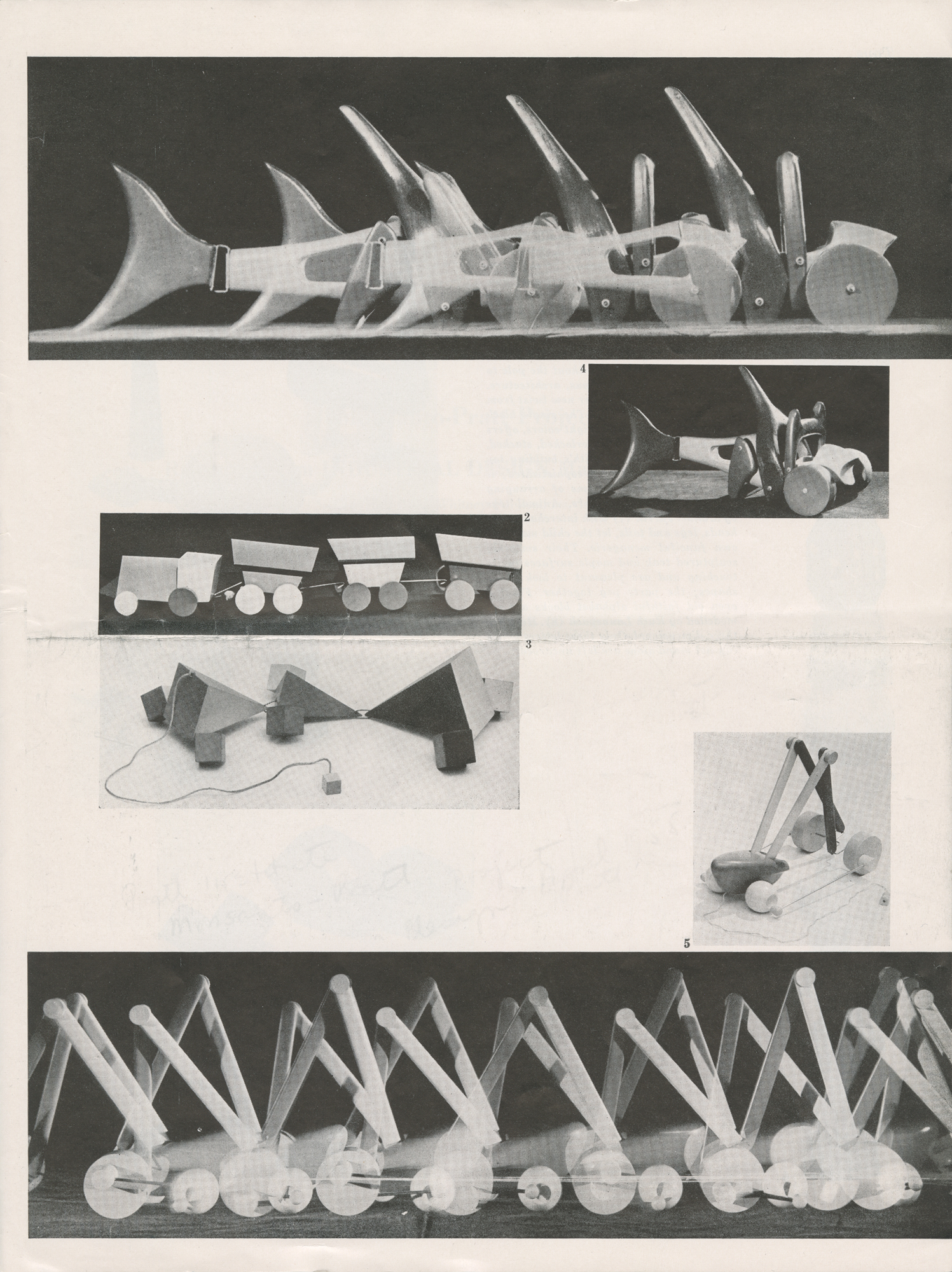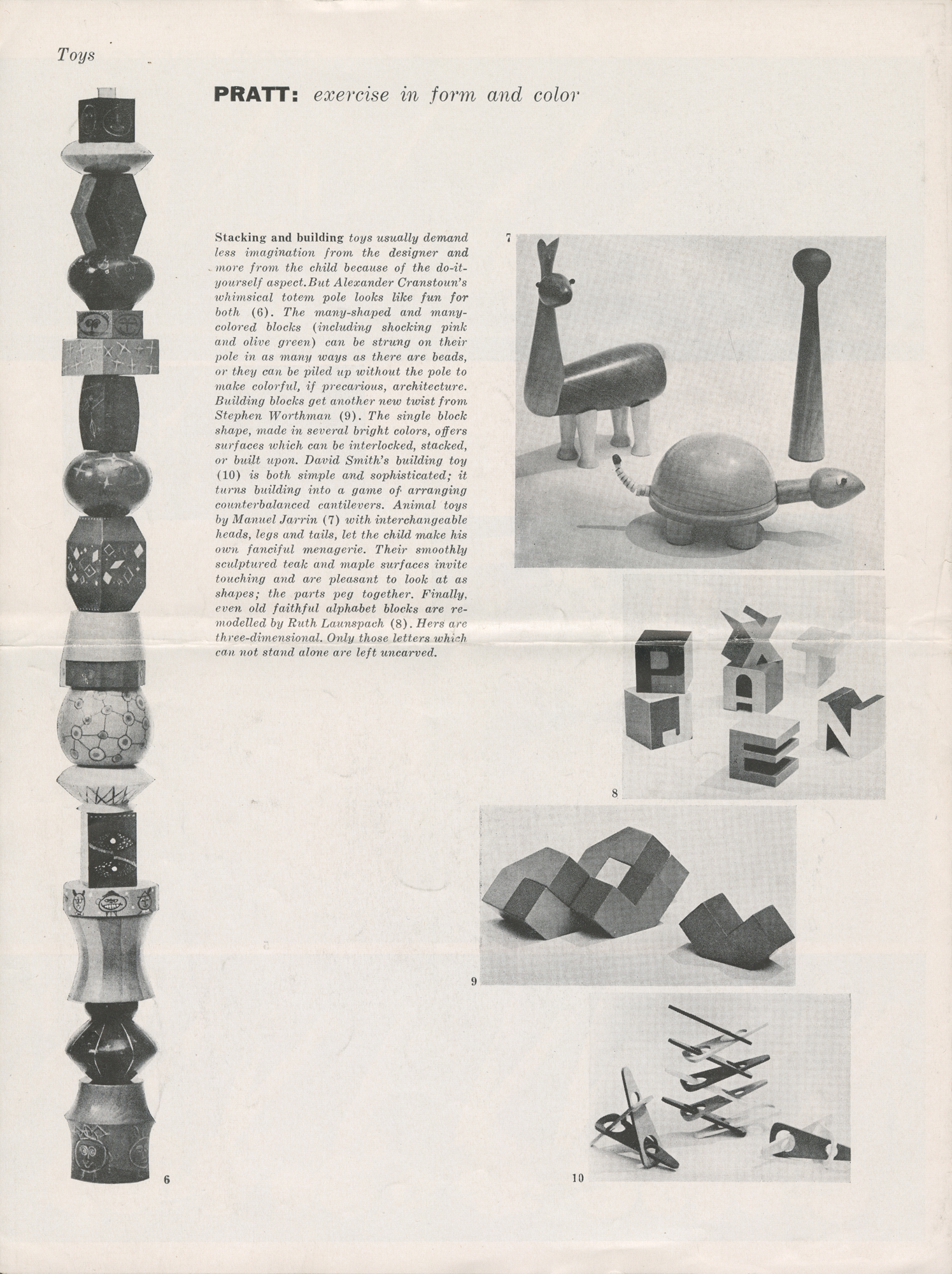Project Toys Article



Industrial Design, 1955
PROJECT TOYS Students’ ideas interest manufacturers
By a timely coincidence, student classes at two design schools were given the same problem: toys. Reasons for the project were quite different. Associate Professor Ivan Rigby’s second year de- sign students at Pratt Institute were given a pure design problem: they were to create the simplest possible toys that could be stacked, pulled or nested. Production difficulties did not have to be considered; the purpose of the project was to let students develop new ideas in color and form by letting their imaginations loose within a simply defined area. Architecture students at the University of Pennsylvania, on the other hand, were given the project by Professor Stanislawa Nowicki as an exer- cise in prefabrication: they were to de- sign toys based on one or at most two modular units, which could be repeated infinitely and combined in various ways. In neither project were the concepts of the toys to be investigated. As in many design problems, the themes were old and only the interpretations new.
Both were simply “idea” projects. In neither was the student expected to turn out finished toys, ready for production. But both classes turned out such fresh and original ideas that manufacturers have snapped up some of the best in each. Monsanto is going to make up several of the suitable Pratt designs as part of a program to encourage bet- ter quality plastic toys. Several manufacturers are interested in the modular designs of the Penn group, shown on the next spread.
Pratt students’ toys fall for the most part into two groups-toys to pull and toys to build with. The idea of a pull toy is certainly old, but here it gets some new twists. One of them is color. A toy by Bartholomew Russo, for instance (1), is striped in two shades of green like a cut-up cucum- ber. Another innovation is in kinds of movement. Russo’s toy careens along with a crazy mixed-up roll because the irregular conoidal cylinders are pitched in alternate directions. A train by Carl Olsen (2) is not unlike toy trains that have been on the market for years. But this one combines its elementary cubes, trapezoids and lozenges in a particularly clean and pleasing way. On the other hand an almost rudely simple train-animal-dragon by Robert Matthews (3) makes an imaginative and unconventional toy by reducing the “body” to three nicely opposed triangular blocks and making the “wheels” of all things, cubes. The front two blocks look as though they’re going forward; the rear drags as rears are apt to do, and the square wheels make a lovely child-pleasing racket. George Sereni’s fish (4) attempts a complicated, con- trolled movement. Fierce, Buck Rogers-ish, and almost aggressively plastic, its sections knock against each other and against the floor as the toy moves to combine four ways: the tail and body wave from side to side and the fins from back to front. A rather elegant grasshopper by Marlan Polhemus (5) is the wittiest of the lot. Noise is not absent here either: a little bead, at the front end of the piston that joins the fixed rear wheels to the front, clacks as the string is pulled taut.
Stacking and building toys usually demand less imagination from the designer and more from the child because of the do-it-yourself aspect. But Alexander Cranstoun’s whimsical totem pole looks like fun for both (6). The many-shaped and manycolored blocks (including shocking pink and olive green) can be strung on their pole in as many ways as there are beads, or they can be piled up without the pole to make colorful, if precarious, architecture. Building blocks get another new twist from Stephen Worthman (9). The single block shape, made in several bright colors, offers surfaces which can be interlocked, stacked, or built upon. David Smith’s building toy (10) is both simple and sophisticated; it turns building into a game of arranging counterbalanced cantilevers. Animal toys by Manuel Jarrin (7) with interchangeable heads, legs and tails, let the child make his own fanciful menagerie. Their smoothly sculptured teak and maple surfaces invite touching and are pleasant to look at as shapes; the parts peg together. Finally, even old faithful alphabet blocks are remodelled by Ruth Launspach (8). Hers are three-dimensional. Only those letters which can not stand alone are left uncarved.